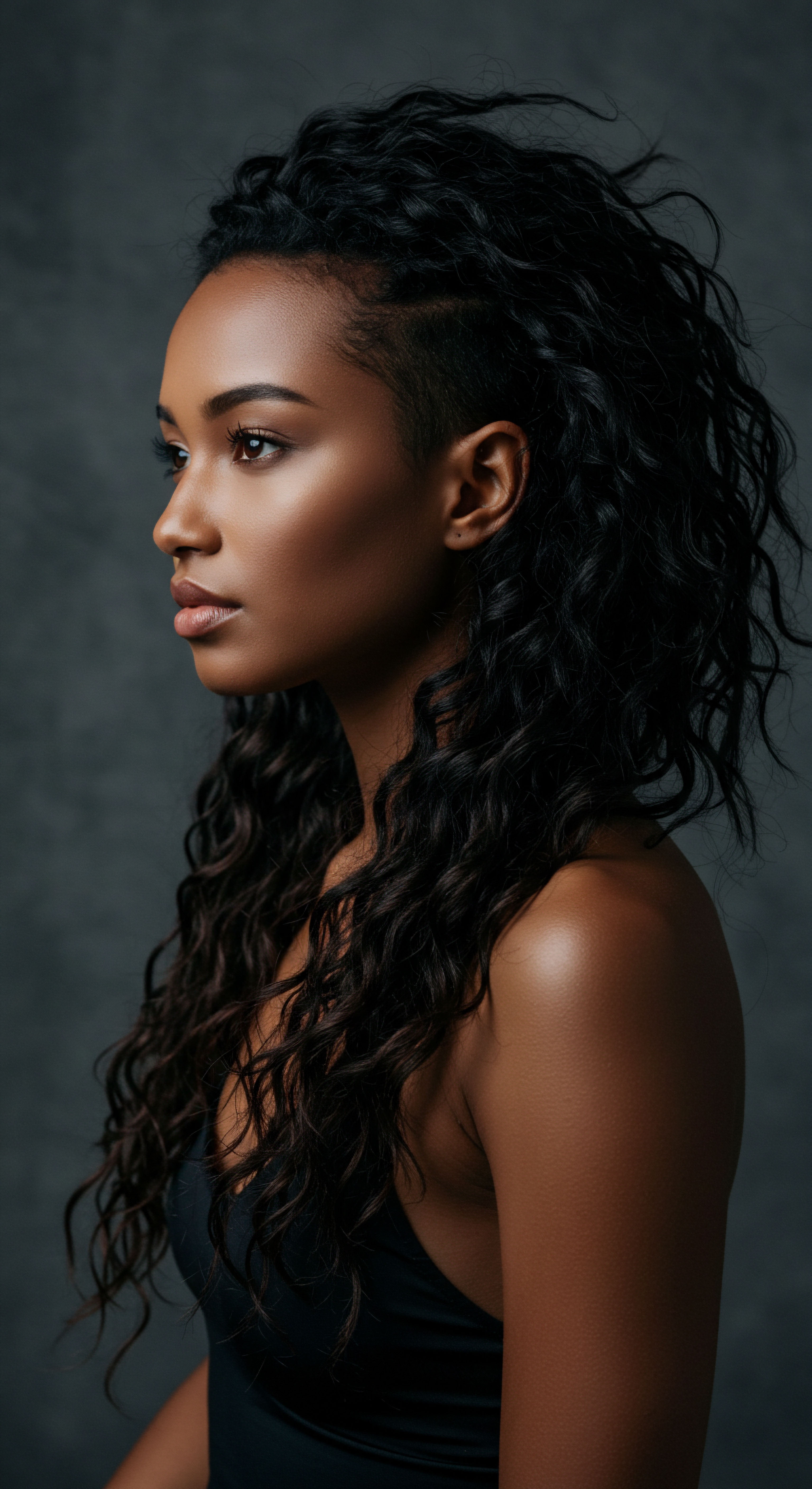
Roots
To truly grasp the essence of coily hair, one must journey to its very beginnings, to the foundational elements that grant it such distinct character. This is not a surface-level glance at its outward appearance, but a gentle inquiry into the biological marvels and inherited blueprints that shape each strand. We look to the hidden architecture, the microscopic design that dictates its unique form and behavior.
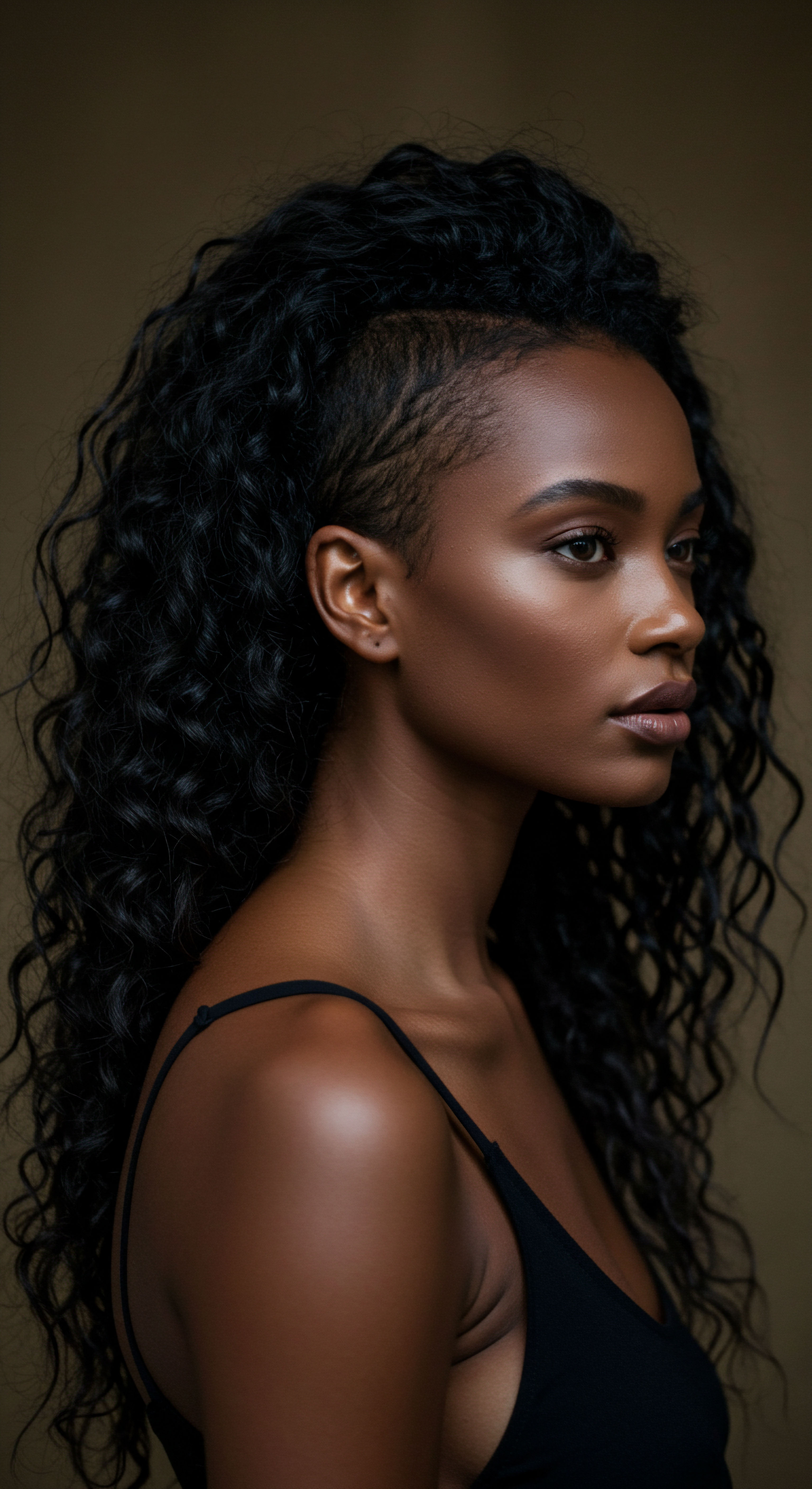
Hair’s Inner Structure
Every strand of hair, regardless of its visible curl, is a complex protein filament emerging from a follicle. For coily hair, the story begins beneath the scalp, with the shape of this follicle. Straight hair tends to grow from a round follicle, creating a straight shaft. As the follicle becomes more oval, the hair shaft takes on a more curved form, leading to waves and curls.
Coily hair springs from a particularly flat, ribbon-like, or hook-shaped follicle, which causes the hair shaft itself to twist and turn as it grows. This anatomical distinction creates the signature tight spirals, zigzags, and spring-like coils that define coily textures.
Within the hair shaft, proteins called keratins are arranged and held together by chemical bonds. Two types of bonds play a significant part in hair shape ❉ disulfide bonds and hydrogen bonds. Disulfide bonds are strong, permanent connections between sulfur atoms in keratin’s amino acids. More disulfide bonds, particularly those arranged asymmetrically within the hair fiber, result in curlier hair.
These bonds contribute to the hair’s enduring shape. Hydrogen bonds, while weaker and temporary, are responsible for how hair responds to water and humidity. They break when hair is wet and reform as it dries, which is why coily hair can shrink considerably when damp.

Classifying Coily Hair
The Andre Walker Hair Typing System, though a common reference, offers a qualitative guide. For coily hair, this system primarily points to Type 4, further broken down into sub-categories:
- 4A ❉ These coils present as tight, spring-like spirals, often the size of a crochet needle, with a clear, defined pattern.
- 4B ❉ This texture exhibits more of a Z-shape, with less defined curl patterns and a fluffy appearance.
- 4C ❉ Representing the tightest curl pattern, 4C hair has little to no definition without manipulation, often appearing as dense, tightly packed zigzags.
It is important to remember that these classifications are broad strokes. Individual hair can possess a blend of these patterns, even on a single head, underscoring the vast diversity within coily textures. Researchers continue to develop quantitative methods to measure curliness, aiming for a more precise understanding of these variations.
Coily hair’s distinct form stems from its uniquely shaped follicle and the intricate arrangement of internal protein bonds.

The Language of Coily Hair
Beyond scientific terms, a living lexicon describes coily hair. Words like “kinky,” “afro-textured,” and “spiraled” often appear. Understanding these terms helps in appreciating the specific characteristics and care needs.
For instance, the term “shrinkage” is a common descriptor for coily hair’s tendency to appear much shorter when dry than its actual length when wet or stretched. This characteristic is a direct outcome of the hair’s tight curl pattern and its moisture content.
| Term Coil |
| Meaning for Coily Hair A tight, spring-like curl that forms a small, defined loop. |
| Term Kink |
| Meaning for Coily Hair A sharp bend or zigzag in the hair strand, often with less visible curl definition. |
| Term Shrinkage |
| Meaning for Coily Hair The apparent reduction in hair length when it dries, due to its coiled structure retracting. |
| Term Density |
| Meaning for Coily Hair The number of hair strands per square inch of scalp, often high in coily textures. |
| Term Porosity |
| Meaning for Coily Hair The hair's ability to absorb and retain moisture, which varies based on cuticle structure. |
| Term These terms provide a shared vocabulary for discussing the unique aspects of coily hair. |
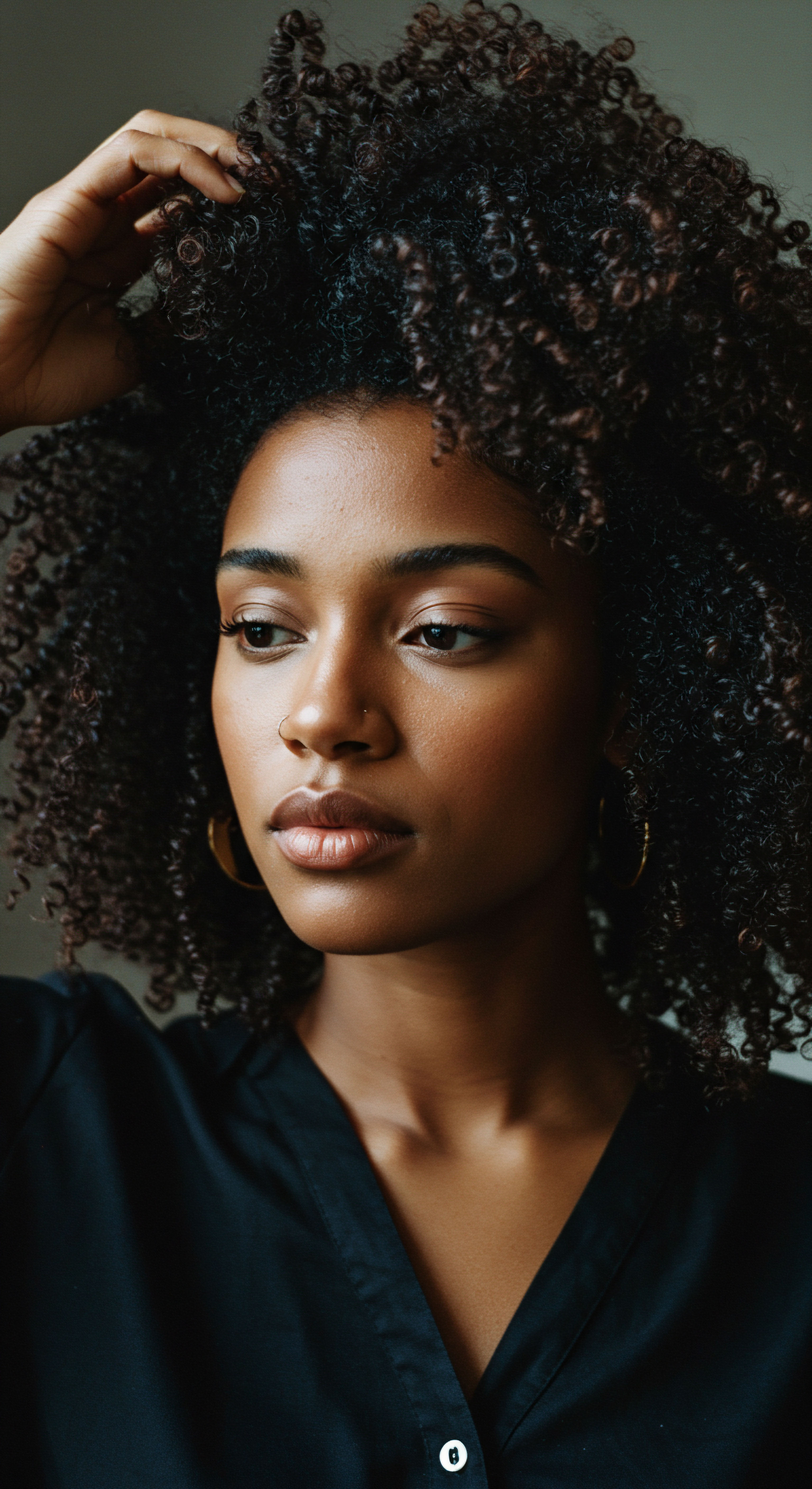
Growth Cycles and Influences
Hair growth occurs in cycles ❉ anagen (growth), catagen (transition), and telogen (rest). While these cycles are universal, factors like genetics, nutrition, hormones, and environment can influence the rate and health of hair growth. For coily hair, these influences can be particularly significant due to its inherent characteristics.
The natural dryness of coily hair, for example, makes it more susceptible to breakage if not properly moisturized, potentially impacting apparent length retention. The hair’s unique structure also means that the natural oils produced by the scalp, known as sebum, have a harder time traveling down the coiled shaft, contributing to this dryness.
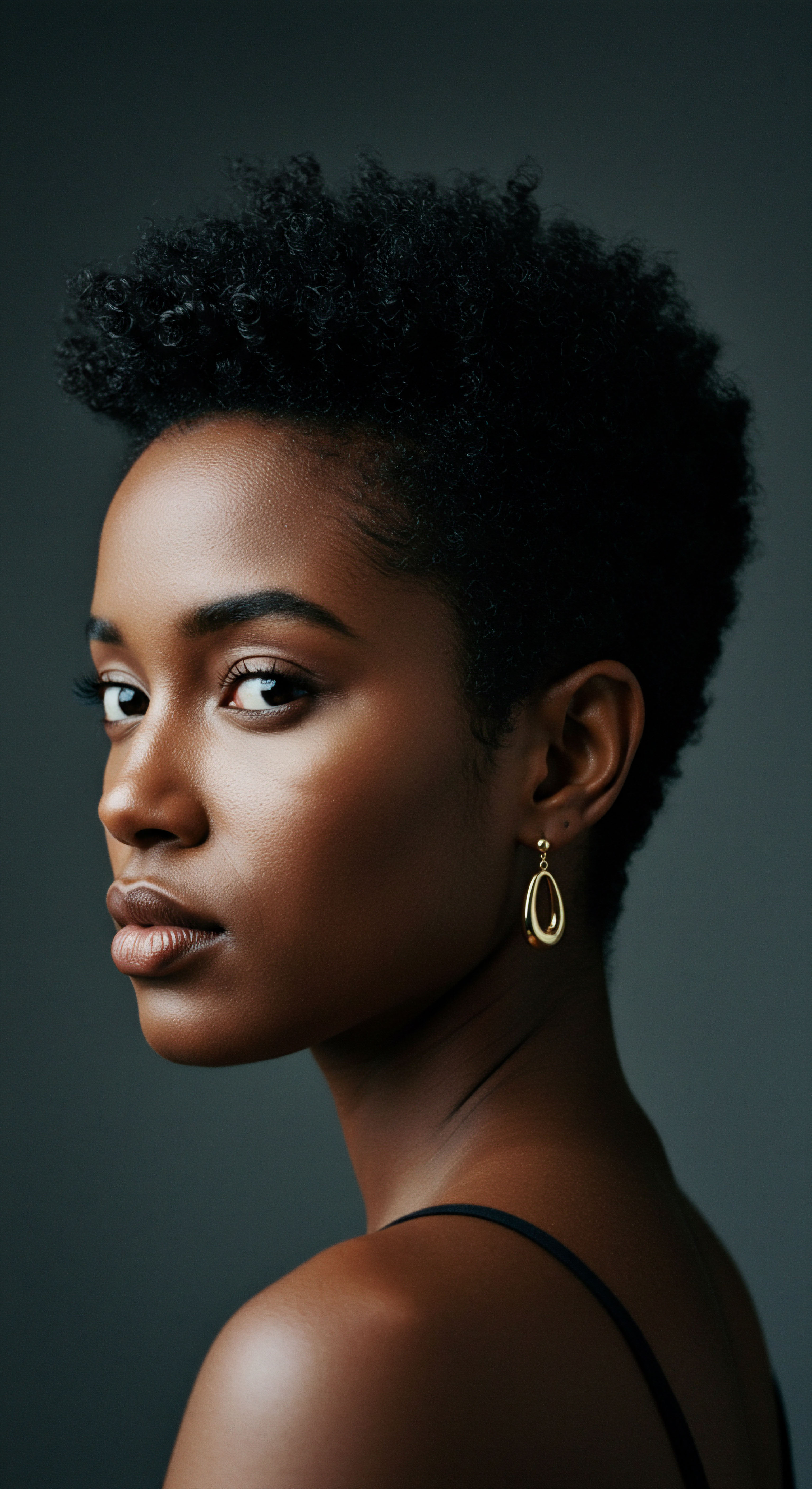
Ritual
Moving from the fundamental understanding of coily hair, we now step into the realm of daily and periodic practices that honor and maintain its unique vitality. This section is a guide, a gentle hand extended to those seeking to nurture their coily strands with wisdom and intention. It is about understanding the practical applications of care, the methods that bring forth health and beauty, and the tools that aid in this beautiful journey.

Creating Personalized Regimens
A successful care routine for coily hair begins with listening to the hair itself. Because coily hair tends to be drier and more fragile than other hair types, moisture is a constant companion. A well-designed regimen prioritizes hydration at every step.
This might mean selecting sulfate-free shampoos that cleanse without stripping natural oils, and following with rich, creamy conditioners. Deep conditioning treatments, applied regularly, play a significant part in replenishing moisture and strengthening the hair shaft.
Beyond cleansing and conditioning, styling choices are integral to a regimen. Coily hair thrives on techniques that minimize manipulation and maximize moisture retention. Understanding your hair’s porosity, its ability to absorb and hold moisture, can guide product selection. Low porosity hair, with its tightly closed cuticle, might benefit from lighter products that do not sit on the surface, while high porosity hair, with more open cuticles, may require heavier creams and butters to seal in hydration.
Effective coily hair care centers on consistent hydration and gentle styling to honor its inherent delicate nature.
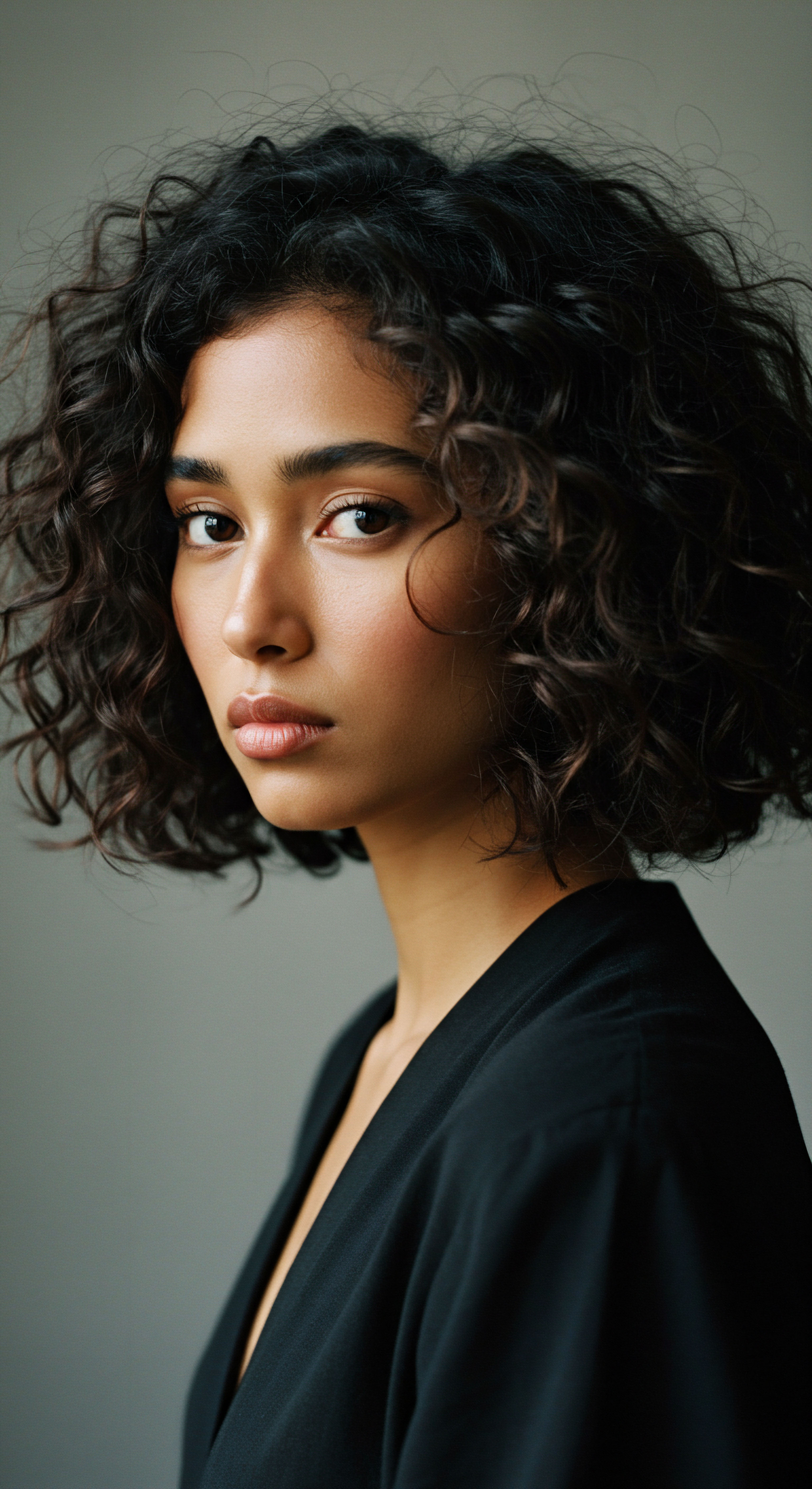
Protective Styling Wisdom
Protective styles are cornerstones of coily hair care, shielding delicate strands from environmental stressors and reducing daily manipulation. These styles tuck away the hair ends, which are the oldest and most vulnerable parts of the hair shaft, helping to preserve length.
- Braids ❉ Whether single braids, cornrows, or box braids, these styles keep hair neatly contained. It is wise to ensure braids are not too tight, particularly around the hairline, to prevent tension.
- Twists ❉ Two-strand twists, flat twists, and twist-outs offer definition and protection. They are versatile and can be worn as a style or taken down for a textured look.
- Buns and Updos ❉ Simple yet effective, these styles keep hair off the shoulders and neck, reducing friction and tangling.
When considering protective styles, periodic breaks between installations are important to allow the scalp to breathe and the hair to rest. This practice helps maintain scalp health and prevents excessive tension on the hair follicles.
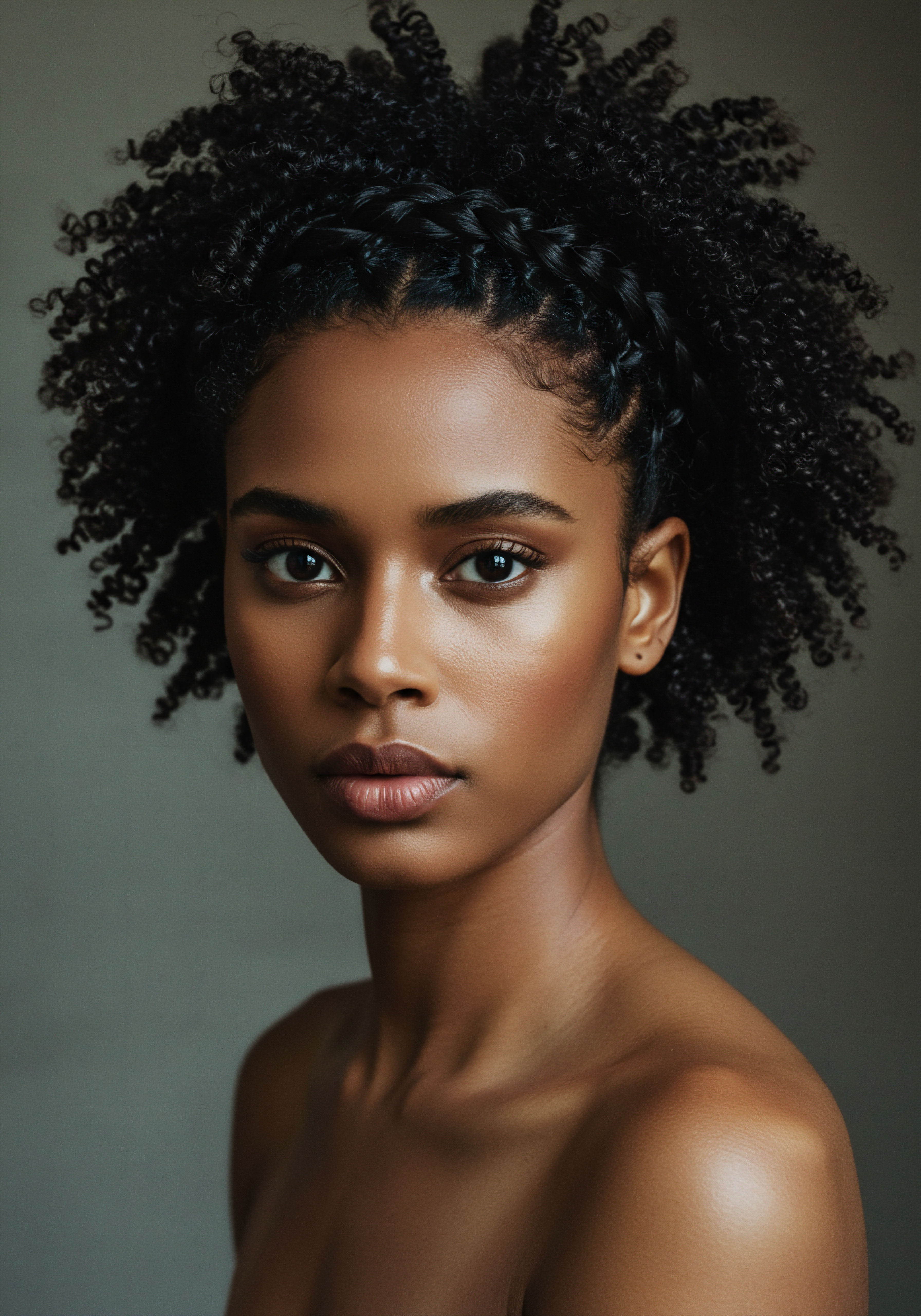
Natural Styling and Definition
Coily hair possesses a unique ability to hold its shape, making natural styling techniques particularly rewarding. Techniques that enhance the natural curl pattern without relying on heat are often favored.
Techniques for Curl Definition ❉
- Wash and Go ❉ This method involves cleansing, conditioning, and then applying styling products to wet hair to encourage and hold the natural curl pattern as it dries.
- Shingling ❉ A meticulous technique where small sections of wet hair are coated with product and individually smoothed to define each coil.
- Finger Coiling ❉ Similar to shingling, this involves wrapping small sections of hair around a finger to create uniform coils.
Products such as curling creams, gels, and mousses formulated for coily hair assist in defining the coils and reducing frizz. These products often contain humectants and film-forming agents that draw moisture from the air and coat the hair, helping to maintain hydration and structure.
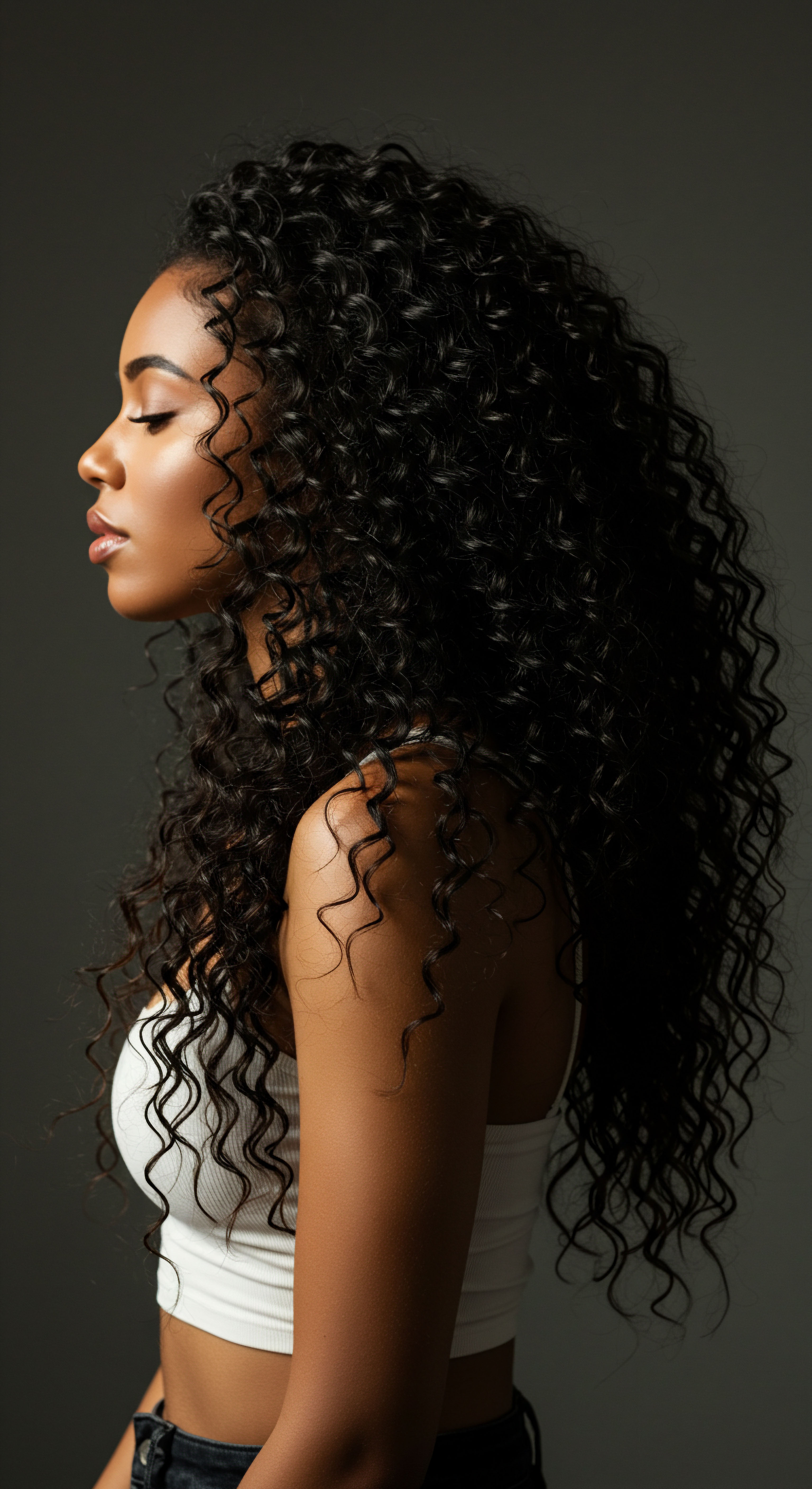
Heat Styling and Safety
While natural styling is often preferred, occasional heat styling may be part of a routine. When applying heat, utmost care is essential to prevent damage. Coily hair, with its delicate structure, is particularly susceptible to heat-induced dryness and breakage.
Safe Heat Application ❉
- Heat Protectant ❉ Always use a heat protectant spray or serum before applying any heat to create a barrier between the hair and the heat source.
- Low Temperature ❉ Use the lowest effective temperature setting on styling tools. Higher temperatures do not necessarily mean better results and significantly increase the risk of damage.
- Minimal Passes ❉ Reduce the number of times a flat iron or curling iron passes over a section of hair.
- Deep Conditioning ❉ Regular deep conditioning and protein treatments can help prepare hair for heat and recover afterward.

Essential Hair Tools
The right tools can significantly enhance the care and styling experience for coily hair.
| Tool Wide-Tooth Comb |
| Purpose and Benefit Ideal for detangling wet hair, minimizing breakage and preserving curl patterns. |
| Tool Spray Bottle |
| Purpose and Benefit Useful for re-wetting hair during styling or for refreshing curls between wash days. |
| Tool Microfiber Towel |
| Purpose and Benefit Reduces friction and absorbs water gently, preventing frizz and damage. |
| Tool Satin/Silk Scarf or Bonnet |
| Purpose and Benefit Protects hair at night, reducing friction with pillowcases and preserving moisture. |
| Tool Hair Clips/Sectioning Tools |
| Purpose and Benefit Aid in organizing hair for easier product application and styling, reducing tangles. |
| Tool Selecting appropriate tools contributes to a smoother, healthier hair care journey. |

Relay
Here, we consider coily hair through a lens that extends beyond its physical attributes and daily practices. This is a look into the broader implications, the cultural narratives, and the scientific complexities that truly shape its definition. We aim for a nuanced appreciation, drawing connections between biology, identity, and societal perceptions, understanding that coily hair carries stories as intricate as its coils.

The Biophysics of Coily Strands
Coily hair, while appearing robust due to its volume and density, often possesses a delicate nature at the individual strand level. Its elliptical cross-section and the many turns along its length mean that natural oils struggle to travel down the shaft, leading to inherent dryness. This dryness contributes to a higher susceptibility to breakage, especially when the hair is manipulated or dry.
The very structure that gives coily hair its distinct look also creates points of weakness where the strand bends sharply. These bending points are areas where the hair fiber’s diameter can be smaller, making it more prone to cracking and fracture under tension.
The mechanical properties of coily hair differ significantly from straight or wavy hair. Studies using stress-strain graphs on hair fibers reveal that coily hair requires a certain tensile force just to uncurl its natural morphology, a “toe region” absent in straight and wavy hair samples. This mechanical behavior underscores the need for gentle handling and specific products that enhance elasticity and reduce friction. The cuticle layers of coily hair can also be larger and spaced further apart than in wavy hair, potentially contributing to faster moisture loss.
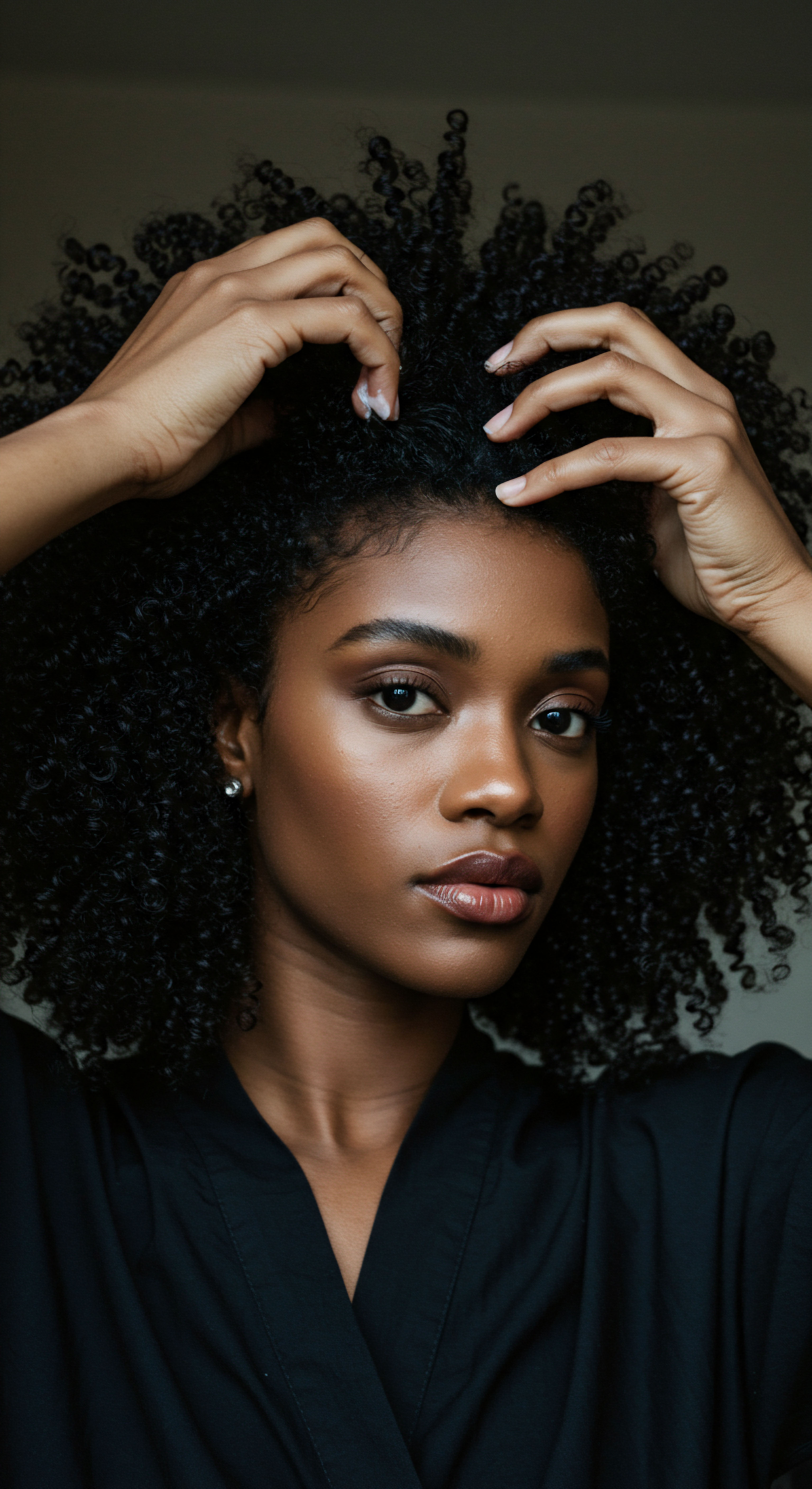
Coily Hair and Identity
The connection between coily hair and personal or collective identity runs deep, particularly within Black communities. Historically, hair has served as a powerful marker of social status, tribal affiliation, and even marital status in various African societies. However, with the transatlantic slave trade, this cultural significance was systematically undermined.
Enslaved people were often forced to shave their heads, a deliberate act to strip them of their heritage and humanity. Eurocentric beauty standards, which favored straight hair, became dominant, leading to a pervasive devaluation of coily textures.
This historical context has left a lasting mark, influencing perceptions of “good hair” versus “bad hair” for generations. The “natural hair movement,” gaining significant momentum in the 2000s, represents a powerful counter-narrative. It champions the acceptance and celebration of natural textures, serving as a statement against historical biases and promoting self-definition of beauty. This movement has encouraged a return to natural styles, challenging the societal pressure to chemically alter hair to conform to a narrower ideal.
The tight spirals of coily hair, while a source of beauty, also present unique structural challenges requiring specific care approaches.

Societal Perceptions and Discrimination
Despite progress, discrimination based on hair texture persists. This prejudice, often termed “texturism,” frequently disadvantages individuals with more tightly coiled hair, even within marginalized groups. A 2023 study by the CROWN Coalition, a group working to end hair-based discrimination, found that Black women’s hair is 2.5 times more likely to be perceived as unprofessional than other women’s hair, negatively affecting advancement opportunities. This reality forces many Black women to alter their natural hair for job interviews or workplace settings, impacting their self-esteem and sense of belonging.
Such biases are not merely aesthetic; they carry significant psychological and economic weight. The continuous pressure to conform can lead to psychological distress and internal struggles with self-acceptance. The CROWN Act (Creating a Respectful and Open World for Natural Hair), enacted in several U.S.
states, aims to outlaw this discrimination, recognizing hair as an integral part of racial identity. This legislative effort highlights the ongoing struggle for equitable treatment and the recognition of diverse beauty standards.
| Aspect of Impact Professional Opportunities |
| Description Black women's hair is often deemed unprofessional, limiting job and promotion prospects. |
| Aspect of Impact Psychological Well-being |
| Description Pressure to conform can cause stress, anxiety, and impact self-esteem and identity. |
| Aspect of Impact Cultural Erasure |
| Description Historical and ongoing pressure to alter natural hair undermines cultural heritage. |
| Aspect of Impact Hair discrimination affects various facets of life, underscoring the need for greater acceptance. |

Environmental Influences on Coily Hair
Beyond genetics and care practices, environmental factors play a part in the condition of coily hair. Humidity, for instance, can cause hair to swell and frizz as hydrogen bonds temporarily break and reform. Conversely, dry climates can strip moisture, leaving coily hair feeling brittle.
Pollution and water quality also pose challenges. Pollutants can cling to hair, dulling its shine, while hard water with high mineral content can lead to buildup, affecting texture and manageability.
These environmental stressors highlight the importance of adaptable hair care routines. Products with film-forming humectants, antioxidants, and chelating shampoos can help mitigate these effects, protecting the hair’s integrity. The resilience of coily hair, despite these external pressures and historical challenges, stands as a testament to its enduring strength and beauty.
Coily hair is not merely a biological trait; it is a cultural marker, a symbol of identity, and a site where societal biases often intersect.
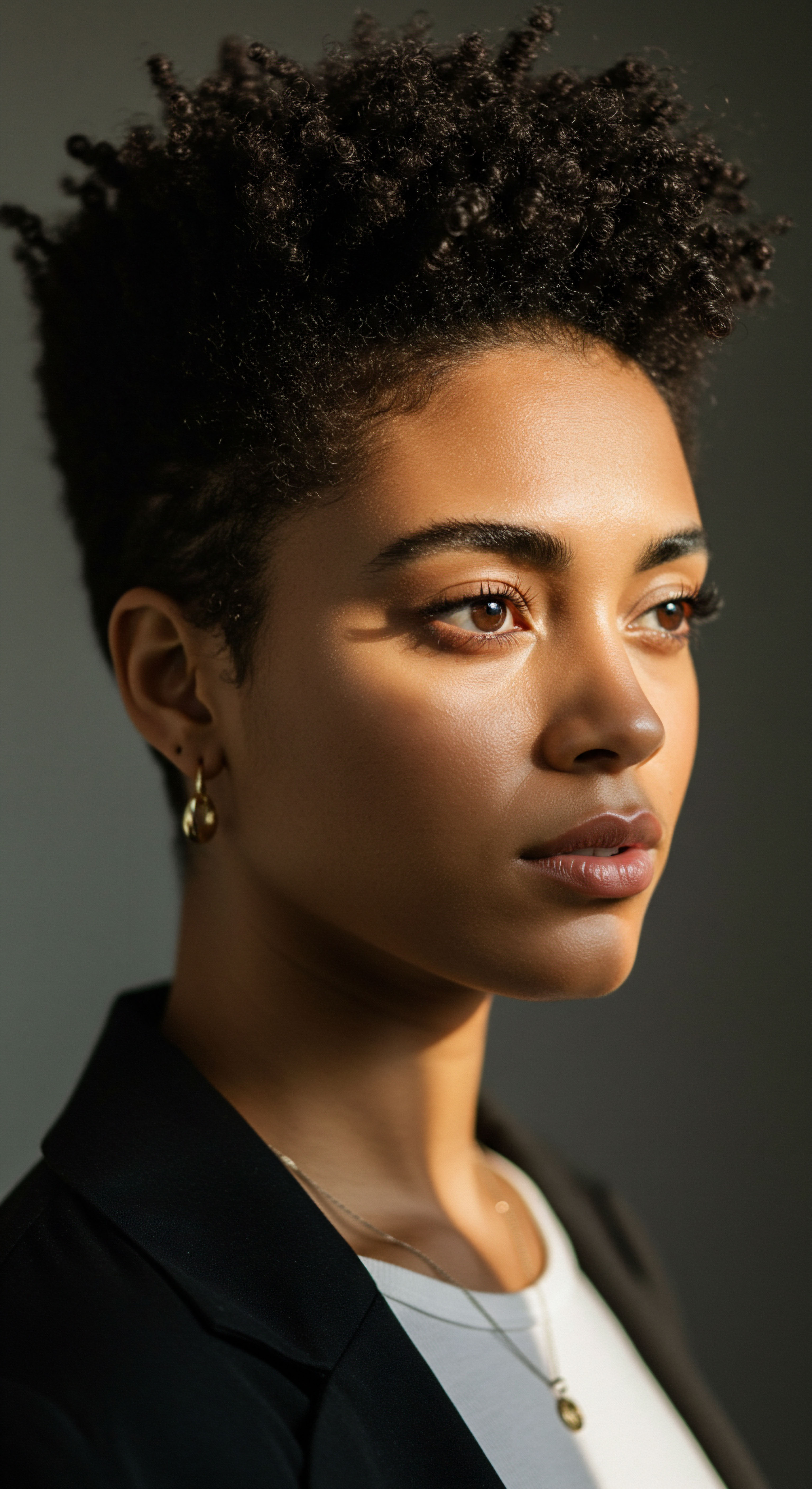
Reflection
The exploration of coily hair unveils a narrative far richer and more complex than a simple description of its curl pattern. It is a story woven from the very fibers of our being, shaped by the whispers of ancestry, the realities of science, and the enduring echoes of human experience. We find in its coils a profound connection to identity, a quiet strength that has navigated centuries of shifting perceptions, and a resilient beauty that continues to inspire.
To truly know coily hair is to appreciate its unique biological blueprint, to honor the rituals that sustain its vitality, and to recognize the cultural significance it carries. This understanding moves beyond superficial appearances, inviting us into a deeper reverence for the diverse expressions of beauty that grace our world.

References
- Davis-Sivasothy, Audrey. The Science of Black Hair ❉ A Comprehensive Guide to Textured Hair Care. 2011.
- Landron, Amanda. “Trichology ❉ A Study of Hair and its Uses as Trace Evidence.” Ursidae ❉ The Undergraduate Research Journal at the University of Northern Colorado, vol. 5, no. 2, Article 5, 2019.
- Landry, C. & Rosette, A. S. “The Effect of Hair Texture on Perceptions of Professionalism in Black Women.” Journal of Leadership & Organizational Studies, 2023.
- Loussouarn, G. et al. “Hair Shape and Curvature ❉ A Global Perspective.” International Journal of Dermatology, vol. 48, no. 12, 2009, pp. 1324-1331.
- Montagna, William, and Richard A. Ellis, editors. The Biology of Hair Growth. Elsevier, 2013.
- Landron, Amanda. “Trichology ❉ A Study of Hair and its Uses as Trace Evidence.” Ursidae ❉ The Undergraduate Research Journal at the University of Northern Colorado, vol. 5, no. 2, Article 5, 2019.
- Serdaroglu, Server, and Zekayi Kutlubay, editors. Hair and Scalp Disorders ❉ Medical and Surgical Management. Springer, 2021.
- Uyama, Makoto. “Recent Progress in Hair Science and Trichology.” Journal of Oleo Science, vol. 68, no. 1, 2019, pp. 1-11.
- Landry, C. & Rosette, A. S. “The Effect of Hair Texture on Perceptions of Professionalism in Black Women.” Journal of Leadership & Organizational Studies, 2023.
- Garrin, A. R. & Marcketti, S. B. “The impact of hair on African American women’s collective identity formation.” Clothing and Textiles Research Journal, 36(2), 104–118, 2018.